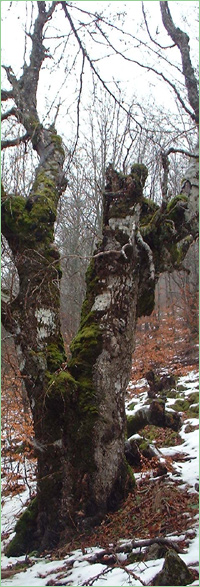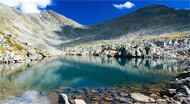Dolinata na reka Batova (Unique identification code in the register: BG0000102)
Category: PZ under the Habitat Directive
Area: 18459.23 hectares Location:
1.
District: Dobrich, Municipality: Balchik, Locality: Hrabrovo, Kranevo, Lyahovo, Obrochishte, Rogachevo, Tsarkva
2.
District: Dobrich, Municipality: Dobrich-selska, Locality: Batovo, Debrene, Odartsi, Prilep, Sokolnik, Stozher
3.
District: Varna, Municipality: Аksakovo, Locality: Dolishte, General Kantardzhievo, Izvorsko, Klimentovo, Lyuben Karavelovo, Novakovo, Oreshak, Vaglen, Yarebichna, Аksakovo
Falls in the territory of the following Regional Inspectorates of Environment and Water (RIEW):
Varna - ul."Jan Palah" 4
Ordinance for announcement:
Ordinance No.РД-800 from 09.08.2021
2-2-102-800-2021
Record for protected zone (link):

Aims of the declaration:
1. Preservation and maintenance of the types of natural habitats specified in item 2.1, the habitats of the species specified in item 2.2, their populations and distribution within the boundaries of the zone, to achieve and maintain their favorable nature conservation status in the Black sea biogeographical region;
2. Improvement of the structure and functions of the natural habitats specified in item 2.1;
3. Improvement of the habitats of the species Triturus karelinii, Testudo hermanni, Testudo graeca and Emys orbicularis;
4. If necessary, improving the condition or restoring the types of natural habitats specified in item 2.1, habitats of species specified in item 2.2 and their populations;
Objects of protection (species or habitats):
1. Article 6, paragraph 1, section 1 from Biological Diversity Act: 2110 Embryonic shifting dunes;
2120 Shifting dunes along the shoreline with Ammophila arenaria (white dunes);
2180 Wooded dunes;
6110 * Rupicolous calcareous or basophilic grasslands of the Alysso-Sedion albi;
6210 Semi-natural dry grasslands and scrubland facies on calcareous substrates (Festuco-Brometalia) (*important orchid habitats);
62C0 * Ponto-Sarmatic steppes;
9150 Medio-European limestone beech forests of the (Cephalanthero-Fagion);
91E0 * Alluvial forests with Alnus glutinosa and Fraxinus excelsior (Alno-Pandion, Alnion incanae, Salicion albae);
91F0 Riparian mixed forests of Quercus robur, Ulmus laevis and Fraxinus excelsior or Fraxinus angustifolia along the great rivers (Ulmenion minoris);
91G0 * Pannonic woods with Quercus petraea and Carpinus betulus;
91H0 * Pannonian woods Quercus pubescens;
91I0 * Euro-Siberian steppic woods with Quercus spp.;
91Z0 Moesian silver lime woods;
2. Article 6, paragraph 1, section 2 from Biological Diversity Act: Mammals - (Rhinolophus ferrumequinum), (Rhinolophus euryale), (Miniopterus schreibersii), (Myotis bechsteinii), (Myotis blythii), (Myotis capaccinii), (Myotis myotis), (Spermophilus citellus), (Mesocricetus newtoni), Видра (Lutra lutra), (Mustela eversmanii), (Vormela peregusna);
Amphibians and reptiles - (Triturus karelinii), (Emys orbicularis), (Elaphe sauromates), (Testudo hermanni), (Testudo graeca);
Fish - (Barbus bergi);
Intervertebrates - (Rosalia alpina), (Lucanus cervus), (Morimus funereus), (Cerambyx cerdo), (Vertigo moulinsiana), (Vertigo angustior);
Plants - (Himantoglossum caprinum).
Current prohibitions and regimes:
1. It is prohibited conducting races with motor vehicles outside the existing roads and the places regulated for that;
2. It is prohibited movement of motorcycles, ATVs, UTVs and buggies off existing roads in non-urban areas. The prohibition does not apply to routes for the movement of the listed motor vehicles determined on the basis of a normative act, as well as in case of disasters, emergencies and for carrying out fire-fighting, emergency, control and rescue activities;
3. It is prohibited to drainage of coastal floodplains of rivers and other natural water bodies , changes in the hydromorphological regime through drainage, removal of sediments, correction, barricading of rivers, except in cases in urban areas and in cases of flood danger, which may lead to a risk to human life and health or the occurrence of material damage, in case of disasters and accidents and to improve the condition of the natural habitats and the habitats of the species under item 2.
4. It is prohibited damage and destruction of natural vegetation in the coastal beaches and indunes outside the active beach area, except in the case of removal of invasive and non-native species as well as in the cases of implementation of eligible investment proposals approved by environmental legislation;
5. It is prohibited to issue building permits and any construction on the territory of the distribution of natural habitat 62C0 * Ponto-Sarmatian steppes, determined with a coordinate register according to Annex No. 2, an integral part of this order, as well as initiating, conducting or continuing procedures according to the order of environmental laws which are a prerequisite for the implementation of construction; the prohibition does not apply to constructions with a valid construction permit on the date of promulgation of this order; for repair and reconstruction of existing objects; for construction, repair or reconstruction of facilities of the technical infrastructure; in the case of construction works with a valid construction permit as of the date of publication in the "State Gazette" of this order, subject to the exception, in order to guarantee the protection of natural habitat 62C0, an express opinion of RIEW Varna, that the specific construction does not affect the habitat;
6. It is prohibited on the territory of the distribution of natural habitat 62C0 * Ponto-Sarmatian steppes, determined with a coordinate register according to Annex No. 2, an integral part of this order, plowing, afforestation and creation of permanent plantations, fruit and vegetable crops, grain and leguminous crops, leaf-stemmed vegetables crops, root vegetable crops, bulb vegetable crops, oil crops, fiber crops, essential oil crops, annual or perennial fodder crops;
7. It is prohibited to change the way of permanent use, plowing, afforestation and conversion into permanent plantations of meadows, pastures and grassland, when using agricultural lands as such;
8. It is prohibited to plow and afforest meadows, barren lands and other unforested forest territories within the boundaries of non-forest natural habitats under item 2.1 except in cases of proven need for protection against erosion and flood rain, as well as in cases of implementation of eligible plans, programs, projects or investment proposals approved in accordance with environmental legislation;
9. It is prohibited to remove landscape features (borders, vital single trees and groups of trees, traditional strips occupied by shrub and tree vegetation among lands under cultivation, protective forest belts, stone fences and hedges), when using agricultural land as such, except in cases to removal of invasive alien species of trees and shrubs;
10. It is prohibited the prospecting for minerals (construction and stone materials), creating new and expanding concession areas for extraction of minerals (construction and stone materials); prohibition does not apply in cases where the date of publication of the order in the "Official Gazette" has started a procedure for granting permits for prospecting and / or exploration and / or the concession for extraction under Subsurface Resources Act (SRA) and Concessions Act, or a procedure for their coordination under Chapter Six of the Law on environmental protection and / or art. 31 of the Biological Diversity Act or an application for registration of a commercial discovery;
11. It is prohibited the use of fertilizers, soil improvers, biologically active substances, nutrient substrates and plant protection products that do not meet the requirements of the Plant Protection Act;
12. It is prohibited the use of mineral fertilizers in meadows, pastures, grasslands, abandoned agricultural lands and forest areas, as well as plant protection products of professional category of use in these areas except for calamity, epiphytosis or the use of selective methods to combat invasive alien species;
13. It is prohibited to use of organic sludge from industrial and other waters and household waste for introduction into agricultural land without permission from the specialized bodies of the Ministry of Agriculture, Food and Forestry and when the concentration of heavy metals, metalloids and persistent organic pollutants in sludge exceeds background concentrations according to Annex № 1 of Ordinance № 3 of 2008 on the norms for permissible content of harmful substances in soils (SG, issue 71 of 2008);
14. It is prohibited to use of irrigation water that contains harmful substances and waste above the permissible norms;
15. It is prohibited burning of stubble, syllables, roadside strips and areas with dry and moisture-loving vegetation;
16. It is prohibited carrying out felling in natural habitat with code 91E0 *, except for the needs of facilities (elements) of the technical infrastructure, for prevention of dangers endangering human life and health, in case of disasters and accidents, for maintenance / improvement of natural habitats and habitats of the species under item 2, as well as in the cases of realization of admissible investment proposals, approved by the order of the ecological legislation;
17. It is prohibited extraction of wood and biomass in forests in the old age phase, except in cases of damage of more than 50% of the area of the respective forest in the old age phase due to natural disasters and calamities; in old age forests, through which existing forest roads and other infrastructure objects pass, if proven necessary, felling of single dry, damaged, endangered or obstructing the safe movement of people and vehicles or the normal functioning of infrastructure objects trees is allowed;
18. It is prohibited grazing of domestic animals in forest areas, which are designated for forests in the old age phase.
Overlapping (partial or full):
1.
Managed Nature Reserve: Baltata
2.
Protected Site: Blatno Kokiche
3.
PZ under the Bird Directive: Batova

|
|

|





